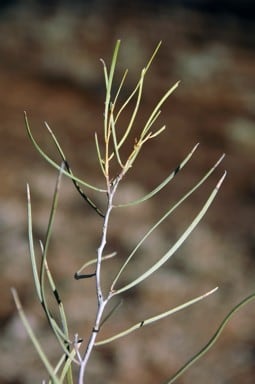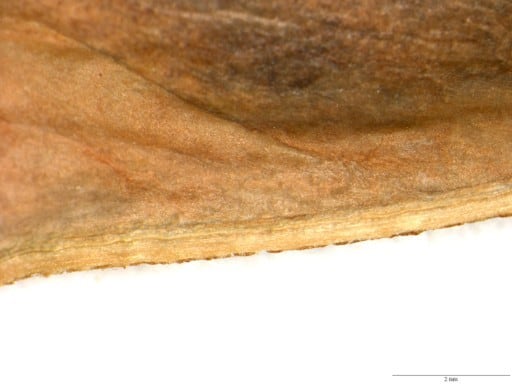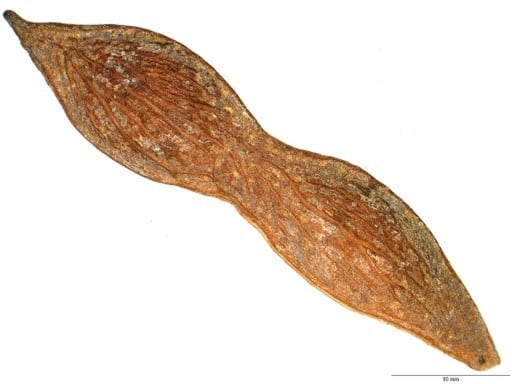Acacia sp. Mulga Paraburdoo (B.R.Maslin et al. BRM 9201)
WATTLE
Acacias of Australia
Family
Fabaceae
Distribution
Uncommon in north western W.A. where it occurs in the Pilbara region near Paraburdoo on flats and stony plains associated with the drainage lines of Pirraburdu Ck, a tributary of the Ashburton R.; also from Mangaroon Stn c. 150 km to the SW.
Description
Tree 4–7 m tall, trunk and main branches somewhat crooked. Branchlets hoary between fine ribs at extremities, soon glabrous; new shoots resinous, slightly viscid, dark brown. Phyllodes narrowly linear, sub-straight to shallowly incurved or wavy, not rigid, flat, 6–12.5 cm long, 1.5–2 mm wide, apex curved to sub-uncinate, green, longitudinal nerves fine, numerous and of uniform prominence; gland 0–1(–3) mm above pulvinus, lamina slightly swollen about the gland. Inflorescences simple, mostly 2 per axil; peduncles 3–6 mm long when in flower, to 11 mm in fruit, resinous, ±glabrous; spikes obloid to short cylindrical, 8–10 mm long. Flowers 5-merous; sepals free, linear-spathulate. Pods narrowly oblong, 5–7.5 cm long, 8–13 (–16) mm wide, flat but slightly raised over seeds, not or shallowly constricted between seeds, coriaceous to slightly sub-woody, resinous, glabrous, obscurely longitudinally reticulate, margins sometimes slightly thickened. Seeds longitudinal to longitudinally oblique, oblong-elliptic, (6–) 8–9 mm long, (4.5–) 5.5–6 mm wide, flattened, dark brown to blackish but often pale-coloured near centre; aril white, sub-terminal.
Habitat
Grows in sandy loam with clay at a shallow depth in mixed Acacia shrubland.
Specimens
W.A.: Mangaroon Stn, just N of Minni Creek Stn, on rd between Lyndon and Cobra stns, B.R.Maslin, J.Miller and J.E.Reid BRM 9180 (PERTH); Paraburdoo–Nanutarra rd, 40 km N of Paraburdoo, E.Thoma 1234 (PERTH).
Notes
A poorly known entity seemingly with affinities to the ‘A. aneura group’ (Mulga). It may possibly be a hybrid between a member of this group and the Mulga relative, A. subtgessaragona. Although B.R.Maslin et al., loc. cit., noted some similarities with A. clelandii it is not likely to be related that this species. The combination of long, narrow, flat phyllodes with the basal gland swollen within the lamina and the wide pods containing large seeds help characterize this entity.
FOA Reference
Flora of Australia Project
Author
B.R.Maslin
This identification key and fact sheets are available as a mobile application:
URL: https://apps.lucidcentral.org/wattle/
© Copyright 2018. All rights reserved.
















